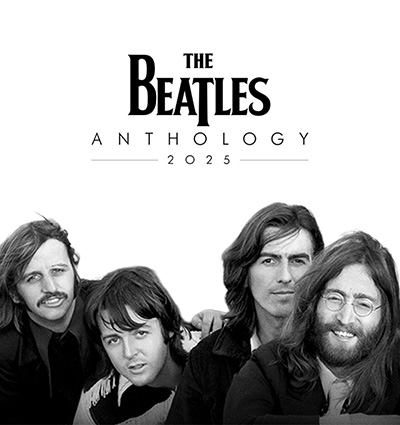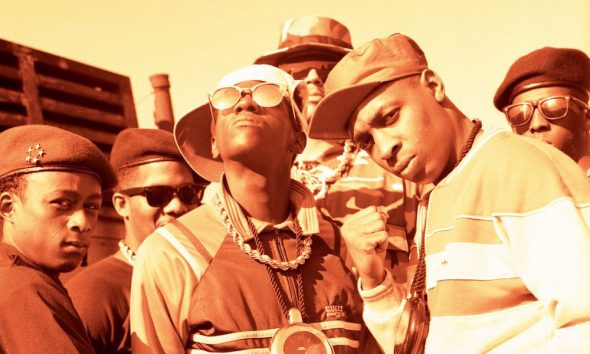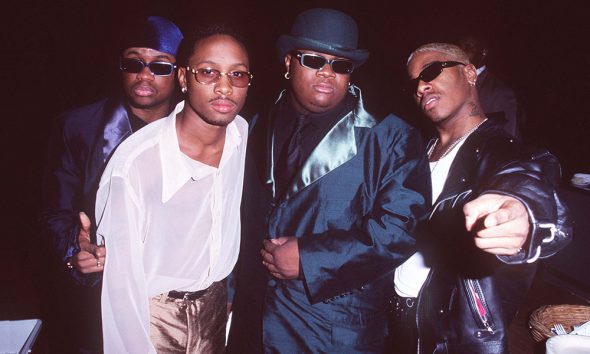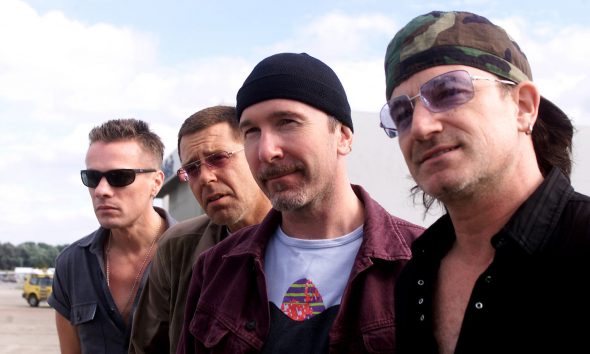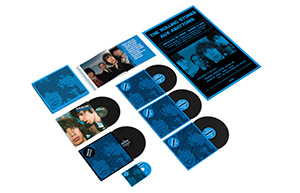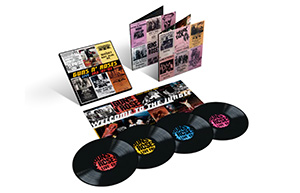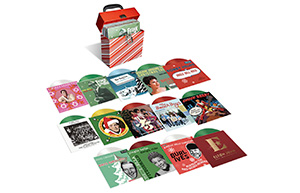Slick Rick Remembers His Debut Album ‘The Great Adventures Of Slick Rick’
The legendary MC reflects on the making of his debut album.

The Notorious B.I.G.’s “I Got a Story To Tell.” Nas’ “Blaze a 50.” Kendrick Lamar’s “The Art of Peer Pressure.” These captivating songs all use storytelling as a device to make their raps come to life inside our minds. And though these three MCs and many others have been praised for their storytelling abilities, there is only one who has been undisputedly crowned by rap fans, critics, and his peers as the greatest hip-hop storyteller of all-time – and he goes by the name of Slick Rick. And if there’s one body of work that defines this greatness, it’s his debut album The Great Adventures of Slick Rick.
The Great Adventures of Slick Rick, originally released by Def Jam Records on November 1st, 1988, is a timeless collection of hip-hop hits, anchored by story-driven street raps like “Children’s Story,” “Mona Lisa,” and “Teenage Love.” Hip-hop records will often sound stale when aged three decades, but not in the case of this era-defining opus. Sure, there are moments on the album when the production is defined by 80s trends, but Rick’s futuristic rhyme schemes, melodic cadences, crisp delivery, and one-of-a-kind, English-infused accent make the songs still sound as fresh as the day the album dropped.
Listen to The Great Adventures of Slick Rick now.
Slick Rick’s early days
Ricky Walters a.k.a. Slick Rick was born into a Jamaican household in South London in 1965. As an infant, he was blinded in his right eye after an incident involving broken glass, hence the distinguishing eyepatch he’s rocked throughout his career. But Rick was shy as a kid because of the injury and spent most of his time inside, where he developed a love for writing stories. And this passion for storytelling would prove to be invaluable when his family moved across the pond during his adolescent years, settling down in the burgeoning home of hip-hop – The Bronx.
Rick’s coming-of-age in the Baychester section of the BX aligned perfectly with the popularization of rap music, and though he held tight to his British accent, his assimilation into hip-hop culture came naturally. At the Fiorello H. LaGuardia High School of Music & Art and Performing Arts, he formed his own rap circle, The Kangol Crew with fellow MC and classmate Dana Dane. But it was his run-in with Doug E. Fresh at a talent show in 1984 that led to an official release on wax with The Get Fresh Crew, giving the world its first taste of his uncanny storytelling skills.
On the B-side to Doug E. Fresh’s 1985 single “The Show” was the beatbox banger “La Di Da Di,” a highly-quotable party cut that details a wild encounter– described play-by-play– with an older woman. It was Rick’s breakthrough moment– and one that compelled Def Jam executive Lyor Cohen to sign Rick to a solo record deal in 1986.
Lyor spoke to us about his first time seeing Slick Rick perform, and why he was determined to add him to the Def Jam roster. “Slick Rick was one of the most unique storytellers I’d ever heard,” Cohen says. “To me, he represented something in such a high quality – unreplicable. He’s a remarkable person, but he is a different type of person. He’s in his own imagination, in his own head. They performed ‘La Di Da Di’ and ‘The Show’ all over the place. That was back when him and Doug E. could do five shows a night in the tri-state area. I saw him, and I wanted to sign him desperately. He was gonna be my first signing, and it was really critical and important to me. All I wanted to do is sign him and protect him as best I could. I knew that by signing him, he would make Def Jam greater. And that’s the only thing that mattered to me – making Def Jam greater. In terms of the storytelling and conceptual architecture, I left that to him.”
From there, Rick worked with the powers that be to piece his debut album together, pairing songs he masterfully crafted himself with tracks produced by The Bomb Squad and the late Jam Master Jay. Two years later, The Great Adventures of Slick Rick was finally released, at a time when Def Jam was thriving with acts like LL Cool J, Public Enemy, and the Beastie Boys. But quite easily, Slick Rick stood out from the pack – and not just because of his accent or the patch over his eye. It was his abilities both as a storyteller on the mic and a beat-maker behind the boards that led to the birth of hip-hop’s newest superstar, and the creation of one of the most revered rap LPs in hip-hop history.
And now, ladies and gentlemen – and Lo-Lifes – the story behind the making of The Great Adventures of Slick Rick, as told to us by the G.O.A.T. storyteller himself. Heeeere we go.
Slick Rick on The Great Adventures of Slick Rick
Slick Rick: “I was just being myself. Everyone else was into battle raps, and – no disrespect or nothin’ – there was a one-dimensional thing going on. I wasn’t really into the battle thing as much as telling stories and humor, with my leftover English accent. It stood out because of the accent and the stories, and it gave rap variety instead of just being one big battle for supremacy.
“I wrote them like an essay form, where you have your introduction to what it’s about, your body of the story, and your ending – with a moral message or something. In high school English class, that’s how you’d lay out the format. I’d start with four cute, hot lines. Then I’d just keep going and going until I’d have a whole record length. An intro, a body, and an outro.
“I was always into telling stories, and humor. It’s like watching the Eddie Murphy movie Raw, when he shows you in the very beginning how he used to do stand-up in front of his relatives? It was very similar to that – telling stories in front of your friends, and seeing what makes them laugh. So when I played with my friends in my age group, that’s how we would play. I would tell them stories, give a little humor and shit. Then when rap came about, I just transferred it into rap form. It just rhymes now.”
“‘Treat Her Like a Prostitute,’ and all that type of stuff – that’s really just young, adolescent, girl crazy shit. Getting your heart broken, your new at romance, your hormones are raging. Think back to when you’re like between 18 and 23, this is the mentality of most youth. So you tell stories that match your age and your environment.
“It wouldn’t be like a Joan Collins book – it wouldn’t be that sophisticated, because she’s a mature, older woman. It would be more of how kids talk and what’s happening with them at your age. If you were a young adult in the 80s, this is how you interact with each other. This is how you talk. Like, ‘Imagine if I met a cute Indian girl, and I was running around with that raccoon hat Davy Crockett was wearing, and I had to meet her parents.’ Your imagination is just running wild.
“And you get it from old TV shows. Like the melody, ‘Davy, Davy Crockett, king of the wild frontier.’ Shit like that. It’s like when Will Smith made ‘I Dream of Jeannie’ over – it was something his age group was familiar with. It’s pretty much the same thing – they all grew up on it. You draw from your environment, and have fun like the kids your age.”
Slick Rick on making music
“We used to just bang on the desks, and repeat songs that were popular in the early ages of hip-hop – duplicate the break beats.
“Then, the first time I went to Teddy Riley’s house, I saw he had a drum machine and an organ and stuff, that he used to make songs. I found out what the name of the drum machine was, and the organ that he had, and I got it myself. Once I tried to take what I was banging on the desk, and transfer it to the drum machine, it worked instantly.
“I couldn’t really play instruments, I just knew they had the sounds on it. And if you take, one, two, three steps, you can basically come up with a bassline. Once I got the organ, I knew how to get the upright bass and the sax and the violin loaded up. Then I’d get the drum track together, and then decorate it with the instruments.
“Sometimes, you’d get inspired by other records that was hot, like breakbeats or 70s, 80s records, and you’d try to duplicate them in your own way. So it has that feel that minorities liked at the time. Anything that moved your feet, that gives you that soul, I tried to put it down like that with the drum machine and the organ.
“I learned to play the organ – not fancy like Stevie Wonder, just one finger at a time. Because bass lines are not that complicated. The bass player has a simple job. It’s just repetition. Then the violin gives it that nice, angelic feel. And the sax gives it that fulfillment, that substance. So you’re basically just relying on the drum track, and the melody to go with it.
“I went to the High School of Music & Art, but I was there for art. But hip-hop was like, grabbing from our youth. Hip-hop wasn’t really musically inclined, from Flash to Melle Mel to Cold Crush Brothers – you had a good ear for music, and you’d take other people’s music and make it even better. There was no real musical training like that. Once you learned the drums and put the little melody on top and it felt good to you and your people, you just kept it moving like that.”
Slick Rick on making an album
“At the time, I was only used to making a single here and there. ‘The Show’ with Doug E. Fresh, and ‘La Di Da Di.’ I wasn’t really looking at it like a job, like, ‘Oh, I gotta make this and bring it to the record label, hope I get a contract.’ We was just having fun and shit, getting noticed. And if it works that instantly, it should continue to work the same way when you make your own album.
“But it’s a lot more songs when you’re making an album, that’s where the pressure comes in. If I said to you, ‘All you have to do is make one hit record a year’ – that’s nothing. But if I said you gotta make, ten, twelve – now you gotta narrow it down to your best ideas. But you still ain’t finished, because they want twelve! So let’s say you got eight, nine. Now you’re gonna have to toss a couple album fillers in there to make the whole cake.
“I had ideas that were just sitting there. It wasn’t really like demos, or anything like that. It was like playing with a toy. You play with drum machine and the organ, you come up with something, like ‘That sounds kinda hot.’ Then you get an idea of how to rap on it – a pattern – and a story that would fit it.”
Going into the studio, collabs
“Back then, there was a studio called Chung King, somewhere near Canal Street. It was a laidback, dark, creepy spot, but I guess it was the birthplace of Def Jam Records and stuff. So that’s where we went.
“I had an 8-track, a drum machine and an organ at home. Once I got to the studio, now it was 24 tracks, a drum machine, and an organ. So now I had 24 tracks, for whatever. Ad-libs, sound effects. You see how ‘Mona Lisa’ has a sound effect of an audience clapping in the front, when I say, ‘Ladies and gentlemen, and Lo-Lifes.’ That’s because I had 24 tracks I could play with. ‘Mona Lisa’ is like two voices talking to each other, but it’s really just me. I just rewinded the track and filled it in.
“Most of the sessions, you’d have your engineer, and a couple execs to make sure everything is going according to plan. But when it came time for other producers, that’s when they’d give you their tracks, and then you gotta rap on their stuff. It wasn’t like someone was overseeing my stuff, but when it came to other people’s stuff, it was like that. We did song songs with Public Enemy’s people – Hank Shocklee and them – Jam Master Jay, and that’s pretty much all I can remember.
“Back then, nobody was really doing collabos. Eric B. and Rakim did their own album, LL Cool J did his own album, Public Enemy did their own album. It wasn’t really collabo time yet.”
The Ruler’s Back
“I pretty much made ‘The Ruler’s Back’ by myself, and I leaked it to Red Alert. Def Jam was taking too long to release stuff. I had been on the shelf since ‘86 to like, late ‘88. So I needed something to keep me alive. So I took one of the songs I made at home, and I leaked it to Red Alert. It was a cassette.
“I said, ‘Red Alert, I need you to to play this shit on the radio and keep my name alive, because, I don’t know, n****s is moving slow over here.’ So when Red Alert released it, it rejuvenated my name and career, instead of just sitting there like you ain’t doing nothing, or you’re lazy, letting rumors spread. Then after that, Def Jam started doing what they had to do. It was like, ‘Let’s get this moving, kid. Can’t just sit here for three years doing nothing.’”
Teenage Love
“The first record they dropped was ‘Teenage Love.’ I wanted to strangle them n****s. [Laughs.] ‘Cause it’s slow. I got ‘Children’s Story’ in the stash, I got ‘Mona Lisa’ in the stash, so I’m like, ‘Come on, now. What is this, ‘Kill A N****’s Career Day?’’ I was a little upset about that.
“The record label went a different direction. They put out the slow one first. I’m like, ‘Nah n****, you gotta strike while the iron’s hot.’ Then you trinkle down to slow stuff. I wanted to put out ‘Children’s Story’ first, then ‘Mona Lisa,’ then ‘Hey Young World,’ and then maybe ‘Teenage Love.’ But they went with ‘Teenage Love’ first. So what’cha gonna do? They the power.
“At that time, Big Daddy Kane was out, Rob Base, and lots of fast-paced stuff was running around. So it’s best that you put your best foot forward, then go into slow love songs. See LL can do that, because he’s already famous. And he started off with ‘I Need a Beat,’ and built up a reputation. And he was a ladies man, so he could do that. But you can’t come out the gate like that when nobody’s heard from you since ‘85, ‘86.
“Hip-hop is not really into love songs like that. It’s cute, sometimes, like LL Cool J shit. But hip-hop is really more upbeat and gritty.
Children’s Story
“‘Children’s Story’ was the one I was most excited about, because I knew it was gonna be a hit, before it even hit the air. I knew it was gonna be a problem. When I saw what ‘La Di Da Di’ and ‘The Show/ did with the listening audience, I knew that ‘Children’s Story’ had to match or go beyond it.
“We had just pulled up to a gas station, and we was playing ‘Children’s Story’ in the car. Me, my friends, a couple girls was in the car. And I knew that right then it was a problem. It gave me a sense of confidence, and they wasn’t saying nothing negative, so I knew it was over. Once they started playing “Children’s Story” on the radio, I was good to go.”
“It was right before Christmas, ‘88. We had an album release party, and we had on Santa Claus hats. A couple other celebrities was in the house, like Eric B. and Run. We was just having a good time. You had girls with the hats on trying to promote it. I had my little ring game going on, with the Ray Bans – it was very exciting.
The legacy of The Great Adventures of Slick Rick
The Great Adventures of Slick Rick was embraced instantly by both fans and critics. Def Jam publicist Bill Adler remembers the time around the album release fondly. “It was recognized as a masterpiece from the day it came out,” he tells us. “The popular reaction to the album was huge, and the critical reaction was very, very positive – immediately.” And that favorable critical response has continued on to this day, with The Source granting it an honorary Five Mics rating in 2002, and Complex ranking “Children’s Story” No. 1 on their 50 Best Storytelling Rap Songs list in 2012.
Artists have also used Great Adventures as a source of creative inspiration for their own music, with everyone from Montell Jordan to Mos Def to Action Bronson interpolating album favorites for their own hits, and heavyweight producers still using his vocals to create hooks for modern-day rap releases. The influence of Great Adventures on hip-hop over the past 30 years has been endless, as cited during Complex’s 25 Favorite Albums interview series by legendary Slick Rick collaborators Nas and Big Boi of Outkast, as well as one of rap’s most celebrated MCs of 2018 – Roc Marciano.
Nas: “It’s a musical storybook. It’s from a New Yorker with an English accent with an imagination that’s never been heard of before in music. He’s just amazing.” (Complex)
Big Boi: “He was one of my favorite MCs coming up. I had that tape as well. I might’ve been in the 5th or 6th grade or something like that, and he was just the coolest rapper on the planet. Him and Big Daddy Kane were just the coolest guys ever. And not just for the roast. He spit game. He was one of the greatest storytellers of all time, when it comes to hip-hop music. And that was just a great record. You could visualize the words and things he was saying. He was so cool. I’m all about the cool shit.” (Complex)
Roc Marciano: “Storytelling at its finest. Nothing but hits. Records to this day that dudes still have not topped. Who’s made a record better than ‘Hey Young World’ since? Is there anything that’s been released between then and now that can really touch that? Storytelling like ‘Mona Lisa’? Has anyone done that? They’ve tried, but dammit, they failed. Slick Rick is top five for me, forever. Who’s fuckin’ with Slick Rick? There’s nobody that can out rap Slick Rick. Slick Rick’s The Ruler, and this body of work proves it.” (Complex)
It’s clear that The Great Adventures of Slick Rick has been cherished consistently since its release in ‘88. But there still are young rap artists who may have never heard the album. Lyor Cohen stressed to us the importance of these new artists – and fans – doing their hip-hop homework, and delving into Slick Rick’s debut.
Lyor Cohen: “I think all these new rappers – and fans – should spend a couple minutes in understanding the art form. And by doing so, they’ll have to bump into Ricky. I think there’s a lot of things they can take away. In my mind, part of art is about borrowing. It’s just the nature of art. I think they will be richer artists and richer fans for understanding the historical references. And by the way, the joints still feel fresh – to this day.”
Slick Rick on the legacy of The Great Adventures of Slick Rick
As for Slick Rick himself, well, he still gets a kick out of listening to Great Adventures – and performing it – 30 years later. And he’s proud of the impact the record has made on hip-hop through the years.
Slick Rick: “Listening to it again 30 years later, some things still crack me up. Some of the humor is still refreshing, and makes me earnestly chuckle. The sex scene part in ‘Indian Girl,’ I still like on ‘Mona Lisa’ when I say, ‘Shut up, eat your slice of pizza and be quiet.’ I like ‘Moment I Feared,’ because it had a gritty effect. But the humor, and the beats.
“‘Children’s Story’ and ‘Mona Lisa’ will still move a modern hip-hop audience. Certain songs will always last the test of time because of something about them – a James Brown song will always rock a party. Some records are dated, and some can go beyond. And that’s what some of these songs still do – that’s why we’re able to still do shows and bring about intrigue, and have an audience nostalgic about their youth or the ‘80s.”
“I’m flattered that artists would remake the songs they like. It’s a form of flattery. A lot of them are inspired by the stories, maybe it grasped some part of their youth.
“A lot of my records are easy to sample, because you got a lot of nice, crisp, clear sentences that can be used as another individual’s chorus. Hip-hop is a lot of samples, and it was easy to make choruses from my vocals, taking lines and making nice choruses and do what they need to do on their newer records. I’m part of their creativity.
“I liked the Lost Boyz version of ‘Hey Young World,’ and Nas ‘Cops Shot The Kid,’ that joint was hot. And I liked Color Me Badd ‘I Wanna Sex You Up,’ and Snoop’s remake of ‘La Di Da Di,’ that was appreciated.”
“When I make a new record, I’m not trying to cater to one small, youthful audience. It’s better to show that your audience from your generation still exists, and it draws other ages towards you. It’s like when you see younger kids like Stevie Wonder.
“You don’t want to seem too preachy, because that’s what everyone expects – that’s not really the market I want to go for. I want to be more of a Redd Foxx. He was hilarious, and that’s what stands the test of time. Like, a Richard Pryor. You talk about where you’re at now in life, and then it resonates. They’re not catering to anyone, and that’s what makes them become classics, icons – legends forever.”
“It’s still a pleasure to perform – it’s still a joy. If you truly enjoy it, then it resonates with the audience and they truly enjoy it. Then you’re good to go.
“I’m happy that younger audiences enjoy themselves. They enjoy the grit, the soul, the groove of the song. It makes you dance, it makes you happy. Being yourself, your audience comes to you, whatever age – young, old. You gotta keep your identity. There’s a lot of pressure for an older artist to act like a younger artist, but sometimes it won’t work. Because you don’t seem authentic to yourself.”
Slick Rick, live
“I ain’t playing no bubble gum trap shit tonight,” exclaims Funkmaster Flex as he addresses the Sony Hall crowd on one of the last summer weeknights of the year in Manhattan. With Slick Rick and co-headliner Jay Electronica waiting in the wings, Flex warms up the “25 and older” rap fans with an onslaught of ‘90s gems, ranging from Brand Nubian’s “Step To The Rear” to Redman’s “Tonight’s Da Night” to the DMX, LOX and Mase posse cut “N****z Done Started Something.” It’s the type of red carpet rollout only Flex could provide for an artist of Slick Rick’s royal rap stature.
After almost an hour of Flex destroying the decks, Slick Rick emerges from backstage draped in a self-designed tank top, a diamond-studded eyepatch, and in his signature, oversized truck jewels – the same ones he so gracefully sports during a cameo in the new French Montana and Drake “No Stylist” video (he even dips out mid-set to change chains, displaying the full breadth of his majestic collection). Backed by his dancers “The Slickettes,” Rick runs through his most notable classics and smiles as the spirited crowd shouts out every quotable, controlling the mic with the confidence of a king. It’s clear that 30 years later, nothing has curbed Slick Rick’s desire to tell his stories – all hail The Ruler.
Listen to The Great Adventures of Slick Rick now.
Editor’s note: This article was originally published in 2018.
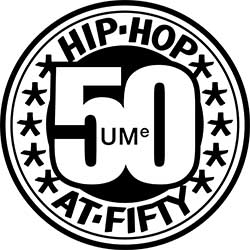
In celebration of hip-hop’s 50th anniversary, uDiscover Music is publishing 50 album reviews throughout 2023 that highlight the breadth and depth of the genre. The Hip-Hop 50 logo was designed by Eric Haze, the mind behind iconic graphics for EPMD and LL Cool J.

